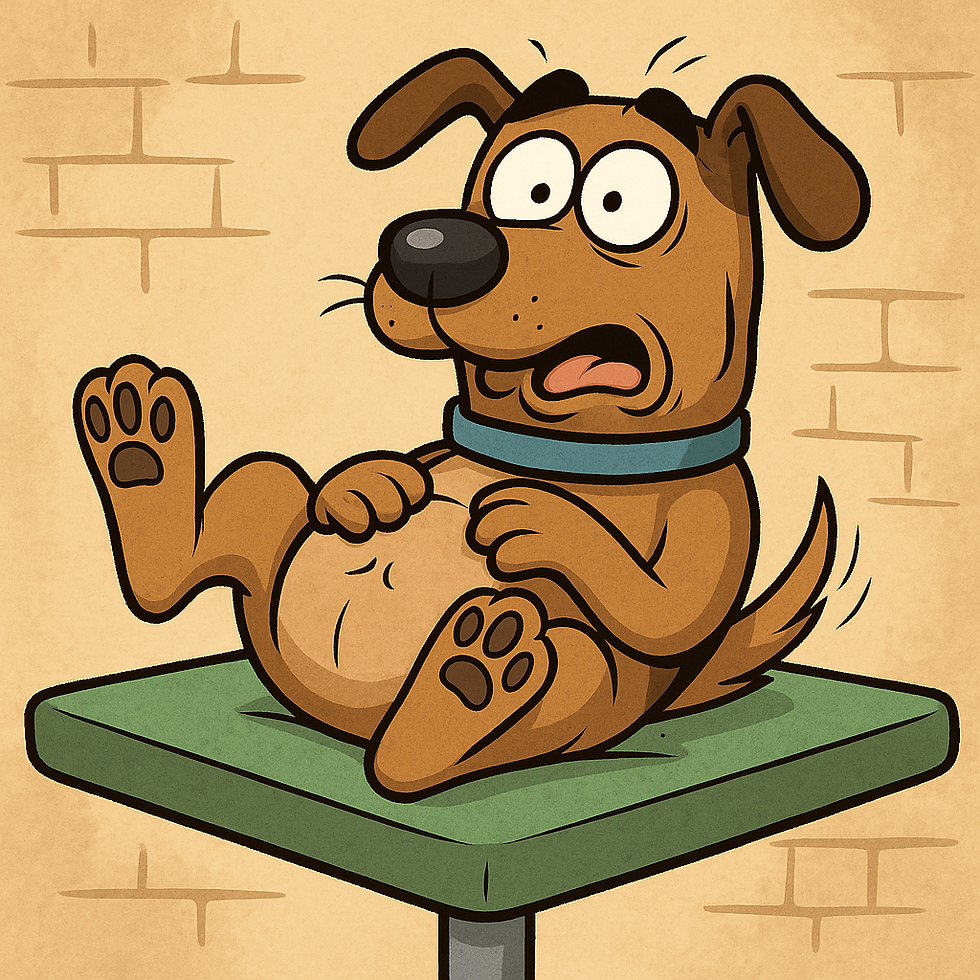Neutering Dogs: What’s Best for Your Pet? Forestside Vets Advice
- Forestside Vets

- Jul 24
- 3 min read

At Forestside Vets, we’re often asked: When is the right time to neuter my dog? Whether you're considering spaying a female dog or castrating a male dog, the answer isn’t always straightforward. Neutering can offer significant health and behavioural benefits, but the ideal timing varies depending on your dog’s sex, breed, size, and lifestyle.
Here’s what you need to know about neutering from our team, and why we believe there’s no one-size-fits-all solution.
Neutering Female Dogs: Timing Is Key
Spaying female dogs (removing the ovaries and usually the uterus) has long been recommended for health and population control. But recent veterinary research shows that when you spay can have a long-term impact on your dog’s health.
✅ Benefits of Spaying:
Reduces the risk of mammary tumours: Spaying before the first or second season significantly lowers the chance of developing mammary cancer, which is often malignant in unspayed females.
Prevents pyometra: A serious, life-threatening infection of the uterus, which affects many older unspayed bitches.
No seasons or unwanted pregnancies: A practical and hygienic benefit for most owners.
⚠️ Things to Consider:
Urinary incontinence: Spaying before the first season may slightly increase the risk of hormone-responsive incontinence in later life.
Orthopaedic development: In larger breeds, early removal of oestrogen can affect bone and joint development, potentially increasing the risk of hip dysplasia or cruciate ligament injuries.
Timing matters: At Forestside Vets, we often recommend spaying after the first season—especially for large or giant breeds—to support proper growth and hormonal balance.
Neutering Male Dogs: A More Individualised Decision
Castrating male dogs (removing the testicles) may help with certain medical and behavioural issues, but it’s not always the best choice for every dog.
✅ Health & Behavioural Benefits of Castration:
Prevents testicular cancer: This risk is completely eliminated once the testicles are removed.
Reduces prostate issues: Neutered males are less likely to suffer from benign prostatic hyperplasia and some infections.
May reduce hormone-driven behaviour: Such as roaming, scent marking, or mounting—though this depends on the individual.
⚠️ Considerations:
Behavioural problems aren’t always hormone-based: Fear, anxiety, or learned behaviours may not improve—and can sometimes worsen—after castration.
Orthopaedic risks: Castrating before your dog has reached full skeletal maturity may increase the risk of joint conditions. For this reason, Forestside Vets generally advise waiting until 12–18 months for larger breeds.
Potential cancer risks: Some studies suggest links between early neutering and certain types of cancer, such as osteosarcoma, particularly in predisposed breeds.
Suprelorin: A Temporary Alternative to Castration
Not quite ready to commit to surgery? The Suprelorin implant is a temporary, non-surgical option for male dogs that provides a reversible way to suppress testosterone.
🌱 What is Suprelorin?
Suprelorin is a hormonal implant for dogs, typically lasting 6 or 12 months, depending on the dosage. It acts like a medical castration—without the surgery.
✅ Benefits of Suprelorin:
Reversible: A great option for owners who are unsure about permanent castration.
Try-before-you-neuter: Allows you to observe how your dog behaves with lower hormone levels before committing.
At Forestside Vets, we frequently recommend Suprelorin for adolescent male dogs where timing is a concern or behaviours are being assessed.
When Should I Neuter My Dog?
There’s no universal answer, but here’s a general guide we follow at Forestside Vets:
Dog Type | Suggested Timing |
Small breed females | Around 6 months or after first season |
Large breed females | After first or second season (9–18 months) |
Small breed males | From 6–12 months |
Large/giant breed males | 12–18 months (after skeletal maturity) |
Undecided? | Consider the Suprelorin implant |
Speak to Forestside Vets About Neutering Advice
Whether you're planning to neuter your dog, try the Suprelorin implant, or simply want advice on what’s best for your dog’s breed and lifestyle, the team at Forestside Vets is here to support you.
✅ Tailored advice for your dog
✅ Breed-specific timing recommendations
✅ Medical and behavioural support from trusted local vets
📞 Call us or book an appointment online to discuss your dog’s neutering options.





Kieran O’Malley and Siobhan
We had our 1st visit today with Rory, very happy with this practice…
Rosa very relaxed and Rory very gentle with her.